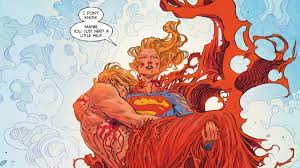The Artistry of Comic Book Artwork
Comic book artwork is a vibrant and dynamic form of visual storytelling that has captivated audiences for decades. From the bold lines of superheroes to the intricate details of fantasy worlds, comic artists use a unique blend of illustration and narrative to create immersive experiences for readers.
One of the most distinctive features of comic book artwork is its ability to convey emotion and action in a single frame. Through skilful use of composition, colour, and shading, artists can evoke a wide range of feelings – from excitement and suspense to humour and melancholy.
Moreover, comic book artwork is not just about drawing characters and backgrounds; it’s about creating a cohesive visual language that enhances the story being told. Artists must carefully consider pacing, panel layout, and transitions to guide readers through the narrative in a seamless and engaging way.
Many comic artists have developed signature styles that set them apart in the industry. From the iconic simplicity of Jack Kirby’s superhero designs to the intricate linework of Moebius’ sci-fi landscapes, each artist brings their own flair and creativity to their work.
Technology has also played a significant role in shaping the evolution of comic book artwork. Digital tools have opened up new possibilities for artists, allowing them to experiment with different techniques, effects, and formats. However, traditional methods such as pen-and-ink or watercolour still hold a special place in the hearts of many fans.
In conclusion, comic book artwork is a rich tapestry of creativity that continues to inspire and delight audiences around the world. Whether you’re a seasoned collector or a casual reader, there’s something magical about seeing stories come to life through the skillful hands of talented artists.
Six Essential Tips for Enhancing Your Comic Book Artwork
- Pay attention to panel layout for effective storytelling.
- Use dynamic angles and perspectives to create visual interest.
- Focus on character expressions and body language to convey emotions.
- Experiment with different styles and techniques to find your unique voice.
- Consider the use of colours and shading to set the mood of the scene.
- Remember that practice is key to improving your comic book artwork skills.
Pay attention to panel layout for effective storytelling.
When delving into the realm of comic book artwork, one crucial tip to enhance storytelling is to pay meticulous attention to panel layout. The arrangement of panels on a page can significantly impact the flow and pacing of the narrative, guiding the reader through the story with precision. By strategically structuring panels, artists can create suspense, emphasize key moments, and establish a rhythm that keeps readers engaged from one frame to the next. A well-thought-out panel layout is not just a visual element but a powerful tool that contributes to the overall effectiveness and impact of the storytelling experience in comic books.
Use dynamic angles and perspectives to create visual interest.
When creating comic book artwork, it is crucial to utilise dynamic angles and perspectives to inject visual interest into the narrative. By experimenting with different viewpoints and compositions, artists can bring a sense of depth and movement to their illustrations, captivating the reader’s attention and enhancing the overall storytelling experience. Whether through dramatic close-ups or sweeping panoramic shots, the strategic use of angles can add a dynamic flair to each panel, immersing the audience in the action and emotion of the story.
Focus on character expressions and body language to convey emotions.
When delving into the realm of comic book artwork, a crucial tip to bear in mind is the emphasis on character expressions and body language to effectively convey emotions. The subtle nuances of a raised eyebrow, a clenched fist, or a downturned gaze can speak volumes about a character’s inner world and add depth to the narrative. By honing in on these visual cues, artists have the power to evoke empathy, tension, or joy within readers, creating a more immersive and emotionally resonant storytelling experience.
Experiment with different styles and techniques to find your unique voice.
To truly excel in comic book artwork, it is essential to experiment with a variety of styles and techniques to discover your own distinctive voice. By exploring different approaches, from bold and graphic to subtle and detailed, artists can uncover what resonates most authentically with their creative vision. Embracing experimentation not only enhances artistic versatility but also paves the way for the development of a unique and recognisable artistic style that sets them apart in the world of comics.
Consider the use of colours and shading to set the mood of the scene.
When delving into the realm of comic book artwork, it is essential to consider the strategic use of colours and shading to establish the mood of a scene. The careful selection of hues and tones can evoke a wide range of emotions within the reader, from creating an atmosphere of suspense with dark, moody shadows to infusing a moment with warmth and nostalgia through vibrant colours. By masterfully manipulating colours and shading, comic artists have the power to immerse audiences deeper into the narrative and enhance the overall storytelling experience.
Remember that practice is key to improving your comic book artwork skills.
Remember that practice is key to improving your comic book artwork skills. Just like any craft, honing your abilities as a comic artist requires dedication, patience, and a willingness to learn from both successes and mistakes. By consistently putting pen to paper and experimenting with different techniques, styles, and storytelling approaches, you can gradually refine your skills and develop your own unique artistic voice. Embrace the journey of growth and evolution in your artwork, knowing that every stroke brings you closer to mastery in the captivating world of comic book creation.


Leave a Reply